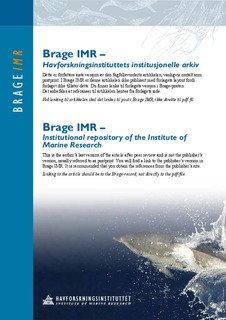Mechanisms regulating oocyte recruitment and skippedspawning in Northeast Arctic cod (Gadus morhua L.)
Skjæraasen, Jon Egil; Kennedy, James; Thorsen, Anders; Fonn, Merete; Strand, Bente; Mayer, Ian; Kjesbu, Olav Sigurd
Journal article, Peer reviewed
Permanent lenke
http://hdl.handle.net/11250/117125Utgivelsesdato
2009-09Metadata
Vis full innførselSamlinger
Originalversjon
http://dx.doi.org/10.1139/F09-102Sammendrag
To examine mechanisms that affect fecundity, atresia and skipped spawning in Northeast Arctic cod (Gadus morhua L.), we conducted an experiment where wild-caught cod (>60 cm) kept under restricted food regimes were subjected to monthly biopsies, hormonal and physical measurements. The power of body weight as a fecundity proxy increased until the presumed end of follicle proliferation in early November, thereafter it remained stable. Atresia occurred in most females; but, for maturing females, mainly close to spawning. 18 % of the females had small gonads with predominantly previtellogenic oocytes at sacrifice in January. These females were past-spawners, verified by post ovulatory follicles in their gonadss. These „skippers‟ had lower condition than maturing cod from December, smaller livers upon sacrifice and lower plasma 17-β estradiol values from early November. Until November, oocytes developed similarly for all females, but in November oocyte development was arrested at the early cortical alveoli stage and atresia occurred in all skippers. In sum, fecundity and skipped spawning seem highly influenced by energy reserves during early vitellogenesis and limited to females only. Finally, skippers were identifiable long before the
predicted onset of spawning, which could have implications for forecasting of egg production and hence stock-recruitment relationships.
Beskrivelse
Journal homepage: http://pubs.nrc-cnrc.gc.ca/rp-ps/journalDetail.jsp?jcode=cjfas&lang=eng
